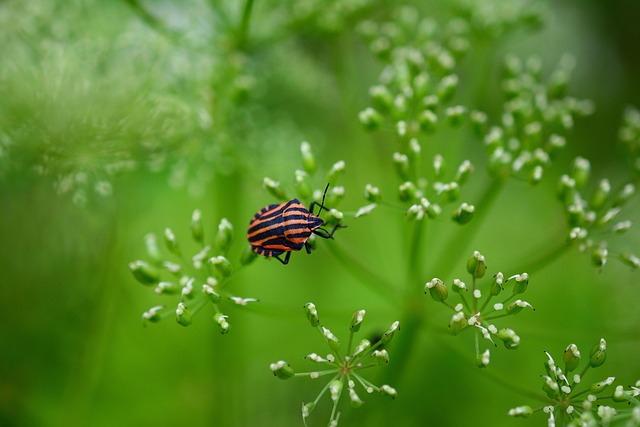Sowbugs, despite their harmless appearance, can become household pests due to their nocturnal feeding habits on plants. These small insects thrive in moist environments and are identifiable by their curling motion, brown/black color, and spoon-shaped heads. Eco-friendly sowbug solutions focus on creating a dry environment, eliminating moisture, and using natural repellents like neem oil or diatomaceous earth to deter them without harming beneficial insects or pets. By adopting these green strategies, you can effectively manage sowbugs while maintaining a sustainable and healthy living space.
Understanding the sowbug life cycle is key to effective pest control. These tiny creatures, often overlooked, can cause significant damage in homes and gardens. This article guides you through the intricacies of sowbug behavior and their life stages, offering insights into identifying these pests accurately. We explore both traditional and eco-friendly pest control methods, highlighting the benefits of natural solutions like plant-based repellents and biological control. Discover practical tips for creating an unappealing environment for sowbugs, ensuring a more sustainable approach to managing these persistent intruders.
Identifying Sowbugs and Their Behavior
Sowbugs, often overlooked, are small, wingless insects that belong to the family of springtails. They get their name from their peculiar habit of moving in a curling motion, resembling a sow eating its cubs. These tiny critters may seem harmless, but they can quickly become a pest in homes and gardens. Identifying sowbugs is the first step towards effective control. They are usually brown or black, measuring around 1–5 mm in length, and are most active at night. These nocturnal creatures prefer moist environments, often hiding in dark corners, under debris, or within plant material.
Understanding their behavior is crucial for adopting eco-friendly sowbug solutions. Sowbugs feed on a variety of organic matter, including fungi, algae, and decaying plant material. They can cause significant damage to gardens by feeding on young shoots, leaves, and roots. To combat them naturally, maintaining a dry environment is key. Regularly eliminating moisture sources, such as leaf litter and standing water, can deter sowbugs. Eco-friendly options include using neem oil or diatomaceous earth, both safe for the environment and effective in repelling these pests without causing harm to beneficial insects or pets.
– Description of sowbugs
Sowbugs, scientifically known as Armadillium species, are small, armored insects that belong to the family Armadillidiidae. Often mistaken for centipedes or millipedes due to their similar segmented bodies, sowbugs are distinct in appearance with a hard, protective exoskeleton and a characteristic spoon-shaped head. They are commonly found outdoors, thriving in moist environments such as gardens, forests, and compost piles. Despite their unassuming nature, these creatures play an essential role in the ecosystem by contributing to decomposition and nutrient cycling.
However, sowbugs can also be considered pests when they enter homes or commercial spaces, especially during times of high population growth. Unlike many traditional pests, sowbugs do not pose significant health risks to humans or pets. Nevertheless, their presence inside structures can be annoying and unsightly. Fortunately, eco-friendly sowbug solutions exist, focusing on non-toxic methods to deter and control these insects, aligning with the growing preference for environmentally conscious pest management practices.
– Habitats and habits
Sowbugs, often overlooked, are common pests found in various habitats, from gardens to homes. They prefer moist environments and can be particularly active during damp nights. Understanding their natural habits is key to implementing effective, eco-friendly sowbug solutions. These tiny creatures spend most of their time beneath leaves, logs, or stones, where they feed on decaying plant matter. This behavior makes them valuable contributors to ecosystem health by breaking down organic waste. However, when their populations grow too large, they can become a nuisance, feeding on garden plants and causing damage.
To control sowbugs naturally, it’s essential to maintain a dry environment as much as possible, especially in areas where they are prevalent. Removing sources of moisture and hiding places like thick vegetation or piles of leaves can significantly reduce their habitat appeal. Additionally, introducing beneficial insects like spider mites or using plant-derived insecticides can help manage sowbug populations humanely and sustainably, aligning with the quest for eco-friendly pest control methods.
– Life cycle stages
Understanding the sowbug life cycle is a key step in implementing effective, eco-friendly sowbug solutions. By recognizing their behavioral patterns and distinct stages, from eggs to adults, homeowners and pest control professionals can develop targeted strategies to mitigate these creatures’ impact. Adopting humane, nature-inspired methods offers a sustainable approach to dealing with sowbugs, ensuring both the preservation of ecosystems and the comfort of living spaces.
